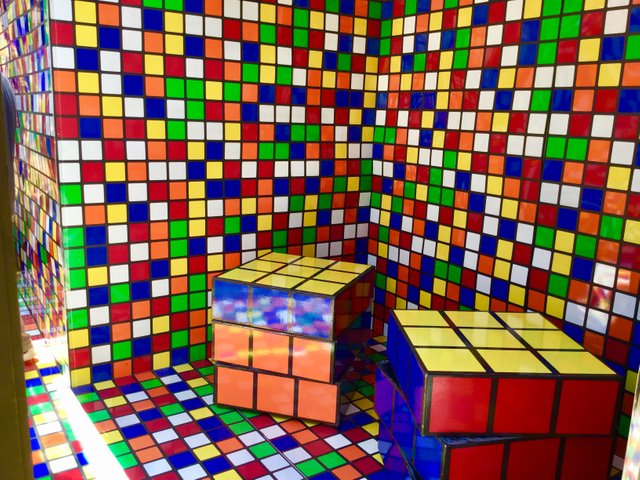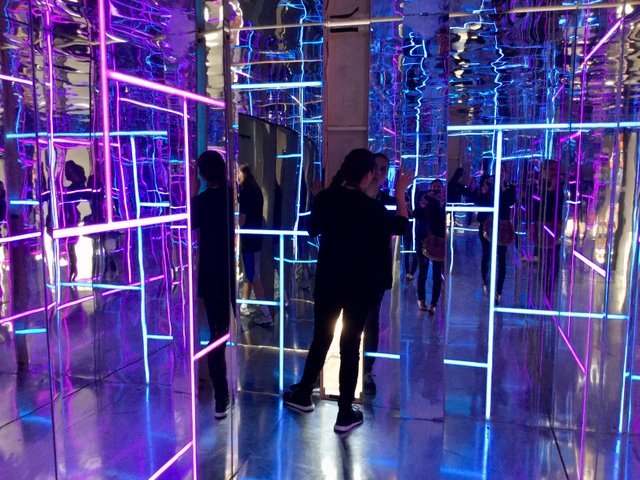Virtual Relevance in Education
Virtual Relevance in Education
I was truly delighted while playing the AR game Pokémon Go! {https://www.pokemongo.com/} with my youngest, and I have an adult child working in the online gaming industry, yet the potential of augmented and virtual realities didn’t truly resonate with me until I finally read 2011’s Ready Player One {https://www.nytimes.com/2011/08/15/books/ready-player-one-by-ernest-cline-review.html} by super trivia researcher/author Ernest Cline.
Clearly written from the angle of a screenplay, this conjurer of 80’s trivia and nostalgia equally provoked a straight shot to envisioning a sci-fi future in which I could relate. I say I, as in I the Educator, eager to hook students into play-based and fun learning challenges.
We know when our students are happy yet providing a challenge at just the right level is a whole ‘nother area of expertise. Apparently, the sweet spot is to make the game or learning experience 83% challenging {https://books.google.com/books?id=wapFAwAAQBAJ&pg=PA42&lpg=PA42&dq=video+games+83%25+challenging&source=bl&ots=aZWLYinh69&sig=Yef-uqUshJWcb72wGQxw5AW48sQ&hl=en&sa=X&ved=0ahUKEwiwqbHx1YvaAhUF74MKHchVA-8Q6AEIdTAI#v=onepage&q=video%20games%2083%25%20challenging&f=false}. Unscientifically, this falls into the Goldilocks range of not too easy and just difficult enough to make you believe you can do better if you try again.
Synonyms of the word ‘virtual’ are effective, near, essential and practical- words educators tend to use frequently. In Clyne’s novel, when main character Wade enters the OASIS, a virtual world of education and an escape from his dystopian existence of 2045, he brings along experience from his actual reality. The worlds blend into Mixed Reality (MR), with each informing the other.
And so I was eager to experience the Ready Player One Challenge in Hollywood {http://www.readyplayeronechallenge.com/} ahead of the Steven Spielberg directed release. Props from the film set were in place, along with actors to lead us through a maze recreating the quest, not too unlike a futuristic-yet-1980s infused Charlie and the Chocolate Factory. Our clues were: 1) Search. 2) Play. 3) Take the Leap. Isn't this the same as what we want for our Design Thinking students? In essence: empathize/define, ideate/prototype, test/get feedback.

The attention to detail was wonderful, right down to the homemade labels on shelves of VHS tapes. For every clue you found along the way, a costumed actor stamped your wrist to declare your achievement, though we later realized the ink was not only invisible, but most likely a placebo stamp of water to make one feel as though they had ‘virtually’ leveled up; it worked.
My disappointment came in the realization that virtual reality was not actually part of this theatrical experience, unless you were a hired actor pretending to experience VR. It took me awhile to come to grips with the fact that I honestly appreciated the reality experience despite the lack of preconceived expectation of augmentation or virtualization.

In my reflective understanding I feel eager to bring similarly exciting experiences to students, which they obviously desire.
The Easter egg is that they not only want to experience the wonder of meaningful learning that we can engineer for them, but that they also want to design awe-inspiring experiences for each other, be they virtual {https://www.virtualiteach.com/single-post/2018/01/30/Ready-Learner-One-Harnessing-The-Power-of-Shared-VR-Experiences?utm_campaign=buffer&utm_content=bufferc1ef9&utm_medium=social&utm_source=twitter.com}, augmented or simply real.

Oh hey I have a piece of advice. You would typically always want to use at least one or two of the most popular tags relevant to your post. Tags are pretty much the only way someone who is not already following you will find your posting. I would recommend checking out this link and sorting by # of posts (click the column header to sort by column) to get an idea of what the most popular relevant tags would be. You should definitely use #education which has 18,000 posts; for reference #steemiteducation has 6,000 posts. None of your other tags even appear on the most popular tags list. Cheers - Carl
Thank you for the great advice and resource link, @carlnash.
I love this, happy to see a teacher actively looking for ways to create a more interactive, engaging, challenging and stimulating educational experience. Game design / game theory has a lot to teach the traditional educational model. Honestly I think you would be hard press to come up with a worse way to effectively learn than to be asked to sit still in a chair while some one else talks to you :) (Not that this describes your classrooms I am sure)
Much love - Carl
I appreciate your positivity and totally agree that traditional schooling is a waste of time. Game theory is one of my many interests, and I consider Steemit a game in many aspects. Folks like you demonstrate the power of encouragement and mentorship on a learner. Thank you!
Very interesting! It just so happens that my officemate runs the VR lab here at UCSD. They have 27 Occulus rift setups plus a few others like Gear VR. It's a teaching lab, where CSE students learn how to program for vr setups, and also attached to the new "Gaming" degree.
Wow, I just might look into a tour of that lab. Thanks for the info!
I've yet to experience virtual reality, but I see it's value in education! I homeschooled for four years my three children and I would have loved this! Computers were just becoming common in households, but the internet was still dial up. We've come so far! Nice article!
Thanks @wandrnrose. Wow, homeschooling 3 kiddos w/out the Internet sounds challenging and wonderful. It's a very exciting time right now for education.
hope you see this and can come :)
https://steemit.com/meetup/@mariannewest/let-s-meet-up-san-diego-4-8-2018